
How to Use 3.5A DC-DC 3.7V to 5V Step-up Boost Converter: Examples, Pinouts, and Specs
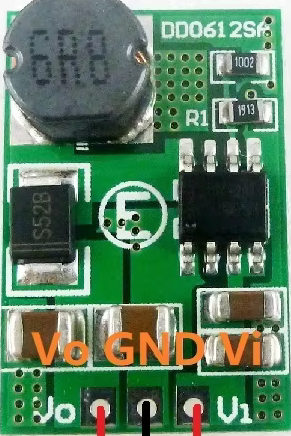
 Design with 3.5A DC-DC 3.7V to 5V Step-up Boost Converter in Cirkit Designer
Design with 3.5A DC-DC 3.7V to 5V Step-up Boost Converter in Cirkit DesignerIntroduction
The 3.5A DC-DC 3.7V to 5V Step-up Boost Converter is a versatile electronic component designed to increase the voltage from a lower input level (3.7V) to a higher output level (5V). This boost converter is capable of delivering a maximum current of 3.5A, making it suitable for powering various 5V devices from a lower voltage source, such as a single-cell lithium battery. Common applications include powering USB devices, microcontrollers, and other 5V electronics in portable and battery-operated projects.
Explore Projects Built with 3.5A DC-DC 3.7V to 5V Step-up Boost Converter
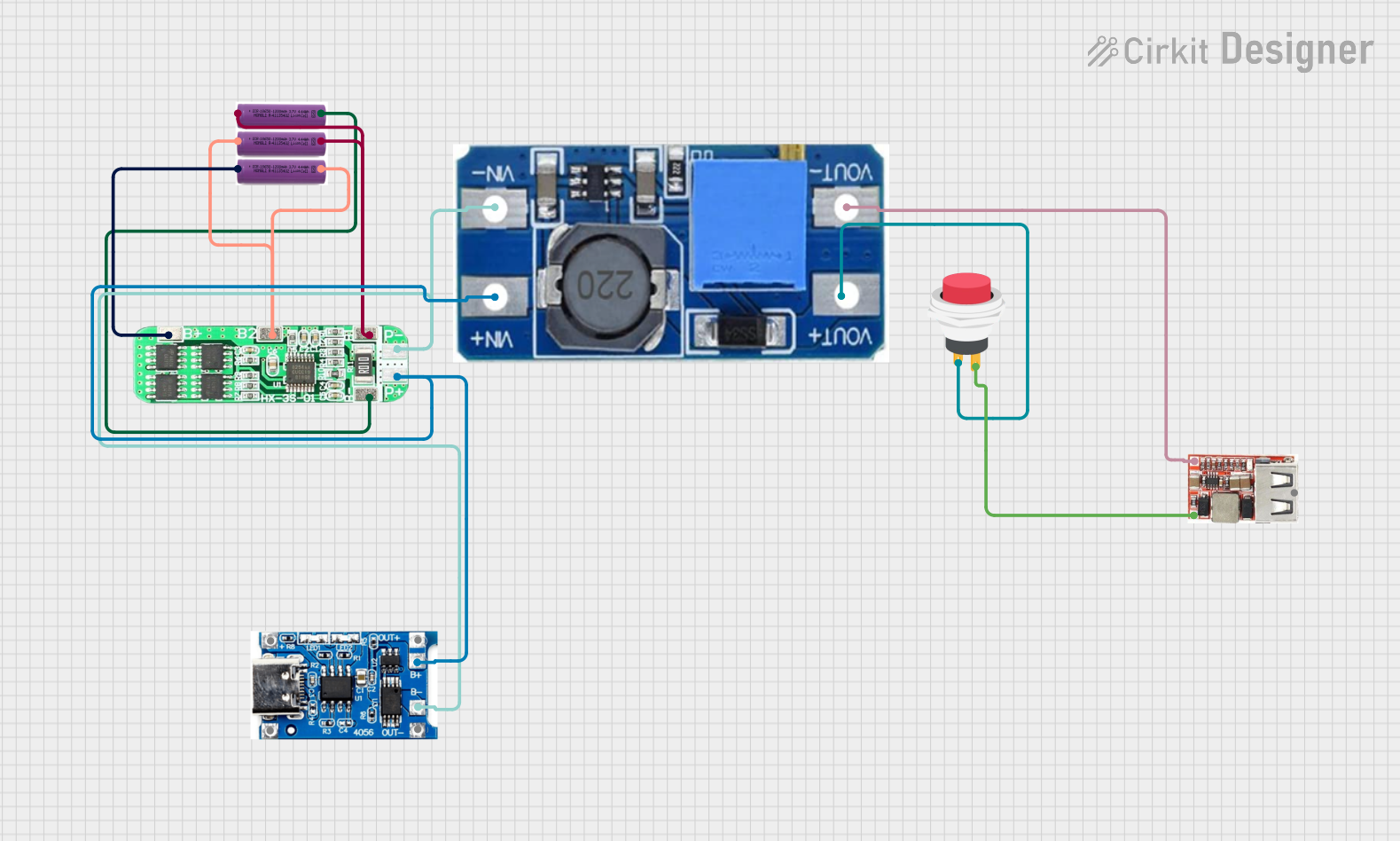
 Open Project in Cirkit Designer
Open Project in Cirkit Designer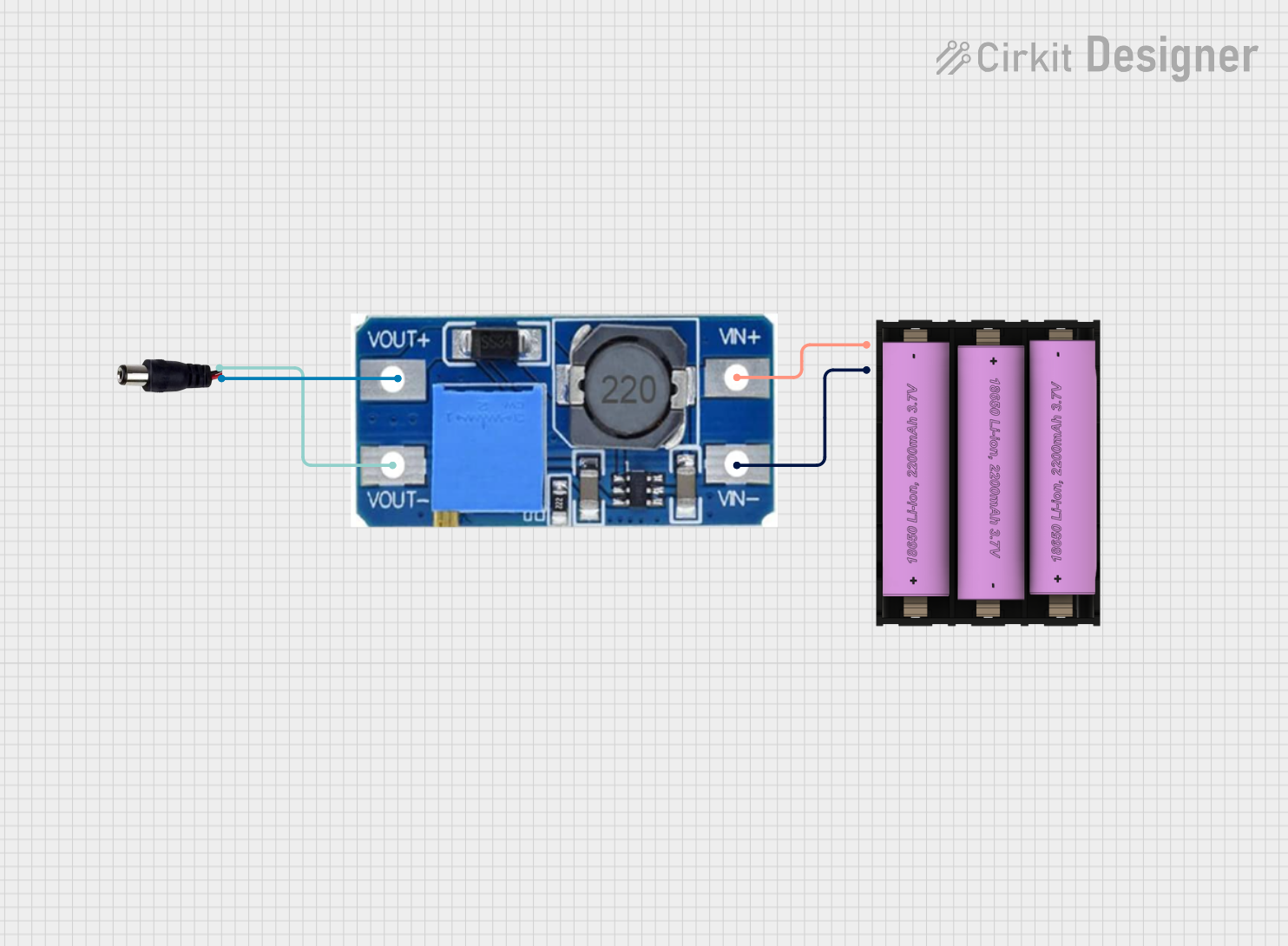
 Open Project in Cirkit Designer
Open Project in Cirkit Designer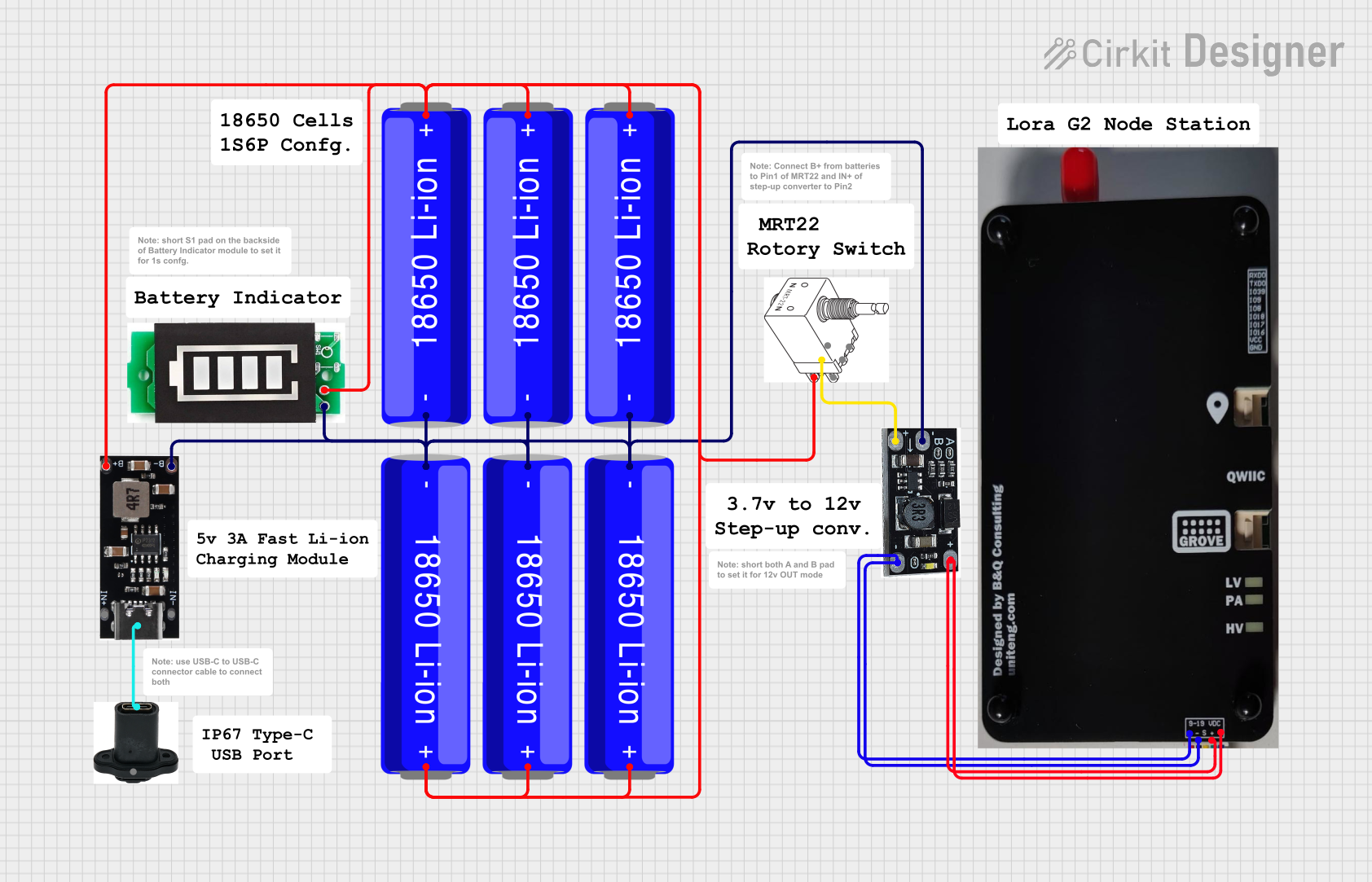
 Open Project in Cirkit Designer
Open Project in Cirkit Designer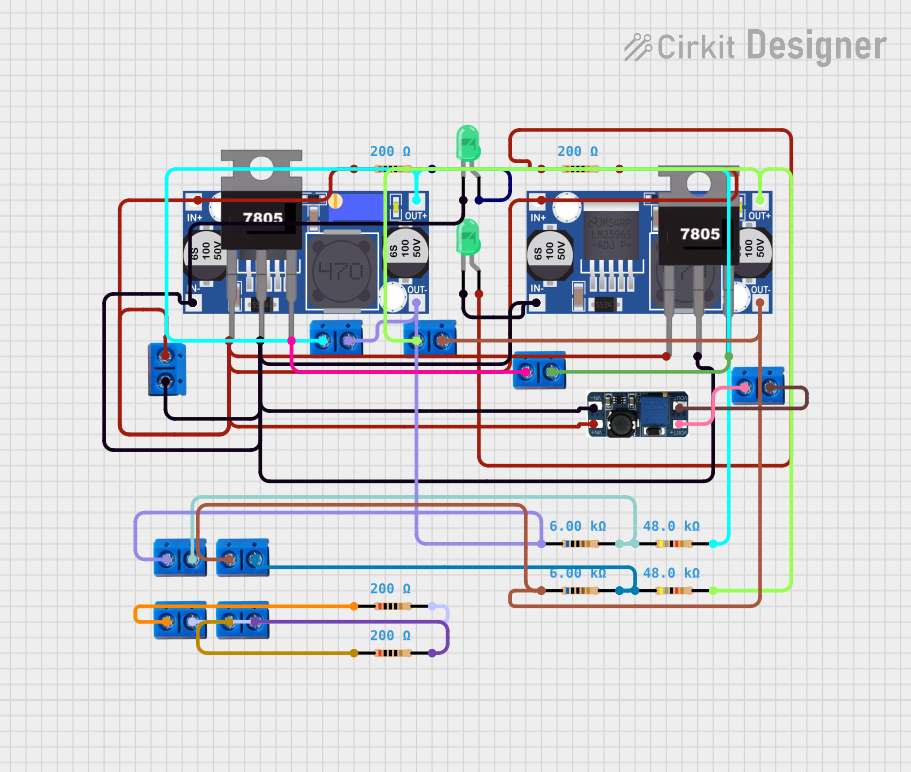
 Open Project in Cirkit Designer
Open Project in Cirkit DesignerExplore Projects Built with 3.5A DC-DC 3.7V to 5V Step-up Boost Converter

 Open Project in Cirkit Designer
Open Project in Cirkit Designer
 Open Project in Cirkit Designer
Open Project in Cirkit Designer
 Open Project in Cirkit Designer
Open Project in Cirkit Designer
 Open Project in Cirkit Designer
Open Project in Cirkit DesignerTechnical Specifications
Key Technical Details
| Parameter | Value |
|---|---|
| Input Voltage | 3.7V |
| Output Voltage | 5V |
| Maximum Output Current | 3.5A |
| Efficiency | Up to 92% |
| Switching Frequency | 1.2MHz |
| Operating Temperature | -40°C to +85°C |
| Dimensions | 22mm x 17mm x 4mm |
Pin Configuration and Descriptions
| Pin Number | Pin Name | Description |
|---|---|---|
| 1 | VIN | Input voltage (3.7V) |
| 2 | GND | Ground |
| 3 | VOUT | Output voltage (5V) |
| 4 | EN | Enable pin (active high, connect to VIN to enable) |
Usage Instructions
How to Use the Component in a Circuit
Connect the Input Voltage:
- Connect the VIN pin to the positive terminal of your 3.7V power source.
- Connect the GND pin to the ground terminal of your power source.
Connect the Output Voltage:
- Connect the VOUT pin to the positive terminal of the device you want to power.
- Ensure the device's ground is connected to the GND pin of the boost converter.
Enable the Converter:
- To enable the boost converter, connect the EN pin to the VIN pin. If you want to control the enable function, you can connect the EN pin to a microcontroller or a switch.
Important Considerations and Best Practices
- Heat Dissipation: Ensure adequate ventilation or heat sinking if the converter is operating near its maximum current rating to prevent overheating.
- Input Voltage: The input voltage should be stable and within the specified range (3.7V). Using a voltage outside this range can damage the converter.
- Output Load: Avoid short circuits on the output side, as this can cause excessive current draw and potentially damage the converter.
Example: Connecting to an Arduino UNO
To power an Arduino UNO using the 3.5A DC-DC Step-up Boost Converter, follow these steps:
Connect the Input Voltage:
- Connect the VIN pin to a 3.7V lithium battery.
- Connect the GND pin to the battery's ground.
Connect the Output Voltage:
- Connect the VOUT pin to the 5V pin on the Arduino UNO.
- Connect the GND pin to the GND pin on the Arduino UNO.
Enable the Converter:
- Connect the EN pin to the VIN pin to enable the converter.
Sample Arduino Code
Here is a simple Arduino code to blink an LED, demonstrating the use of the boost converter to power the Arduino UNO:
// Pin number for the LED
const int ledPin = 13;
void setup() {
// Initialize the digital pin as an output.
pinMode(ledPin, OUTPUT);
}
void loop() {
// Turn the LED on (HIGH is the voltage level)
digitalWrite(ledPin, HIGH);
delay(1000); // Wait for a second
// Turn the LED off by making the voltage LOW
digitalWrite(ledPin, LOW);
delay(1000); // Wait for a second
}
Troubleshooting and FAQs
Common Issues Users Might Face
No Output Voltage:
- Solution: Check the input voltage to ensure it is within the specified range (3.7V). Verify that the EN pin is connected to VIN to enable the converter.
Overheating:
- Solution: Ensure proper ventilation and consider adding a heat sink if the converter is operating near its maximum current rating. Check for any short circuits or excessive load on the output.
Output Voltage Fluctuations:
- Solution: Ensure a stable input voltage. Check for loose connections and ensure that the input and output capacitors are properly connected.
FAQs
Q: Can I use this boost converter with a different input voltage? A: The converter is designed for a 3.7V input. Using a different input voltage may damage the converter or result in unstable operation.
Q: How do I know if the converter is enabled? A: The converter is enabled when the EN pin is connected to the VIN pin. You can also check the output voltage with a multimeter to confirm.
Q: Can I use this converter to power a Raspberry Pi? A: Yes, as long as the current requirements of the Raspberry Pi do not exceed 3.5A, you can use this converter to power it from a 3.7V source.
By following this documentation, users can effectively utilize the 3.5A DC-DC 3.7V to 5V Step-up Boost Converter in their projects, ensuring reliable and efficient power conversion.